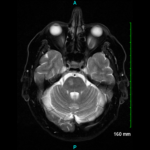
During a press conference in 2002, then Secretary of Defense Donald Rumsfeld provided a categorization of information. To Rumsfeld, information could be divided into three types: known knowns, which are things that we know we know; known unknowns, which are things that we know we don’t know; and unknown unknowns, which are things that we don’t know we don’t know.
This categorization has been much discussed (as well as criticized, touted, and mocked, depending upon your point of view). While history will ultimately judge the wisdom of Rumsfeld’s policies, I am convinced that, when it comes to medicine, there is truth in his thinking. Indeed, I believe that dealing with unknowns – both known and unknown – is at the heart of medical practice and successful patient care comes from learning to make decisions in the face of the uncertain, the imprecise, and the imponderable.
To illustrate this point, I would like to describe a case. This case is a classic example of known and unknown unknowns, and I want your opinion on its management. As you will see, this case is tricky because the rheumatologist was an adviser and not the decider.
Complex Case with a Surprise Twist
The case involved a woman in her 70s who had the usual set of medical conditions that comes with age. Her major complaint was ill-defined chest pain that led to an extensive cardiovascular work-up, which showed that, while her coronary arteries had the slightest occlusions, her thoracic aorta had a worrisome dilation. The surgeons were consulted. They diagnosed an aneurysm of the ascending thoracic aorta and, with abundant cutting and sewing skill, they replaced the troubled aortic segment with a fine new graft.
The diseased aorta – dunked immediately in a jar of formalin – made its way to the pathology department, where the findings were as dramatic as they were unexpected. Under the microscope, in the red and blue hues that are the hallmark colors of hematoxylin and eosin, the aorta was filled with inflammatory cells. Among their number, these cells included some hefty-looking giant cells filled with more than their share of nuclei. The diagnosis was clear: giant cell arteritis (GCA) of the aorta.
With the pathological diagnosis in hand, the surgeons consulted the rheumatology service for our recommendation. Our fellow saw the patient and, during a very thorough exam and methodical history, elicited none of the telltale symptoms of GCA: no throbbing headache, no scorching scalp pain, no curtains of darkness falling across the eyes. Certainly, the patient had her share of misery, but none that could point to vasculitis. Nevertheless, our service, worried that vasculitis could darken her vision forever or menace an artery to the brain, recommended an immediate course of steroids. We wanted the real deal: 1 mg/kg jet-sprayed into the IV that was still in place post-op.
Our surgical colleagues, however, demurred on this course of action. Too many steroids, they said, and far too soon. In a conference outside the patient’s room, the surgeons said that a new graft in the aorta needs time to settle in, a process that should be unperturbed by steroids. Also, there were wounds to close and, the sharp-eyed surgical chief resident said, casting a baleful eye on our group, “You know what steroids do to wounds.” Of course we knew. They make them break and leak. While vasculitis may be bad, a dehiscence could be worse was the surgeon’s clear message.
Two Opinions and No Right Answer
The fellow involved in this case is very diligent. She scoured the literature to find evidence to resolve this dilemma and put real numbers and probabilities on the concerns of both the rheumatologists and thoracic surgeons. Evidence is wonderful but it often seems like the pot of gold at the end of the rainbow – something you search for but never find.
Suffice it to say that no study the fellow perused provided the answer. There were no known knowns in this field: no decisive information on the course of GCA presenting in the aorta, the chance blindness would occur if left untreated, or the chance steroids would impair wound healing. The probabilities of outcomes were – at best – a guess. No better than tossing a dart at a map to determine where to go.
I could list the known unknowns and unknown unknowns in this case and, as we discovered in our research and discussions, there were even unknown knowns. Unknown knowns are things that we should have known but didn’t. The unknowns, however, were paramount and can be reduced to a simple question: How likely were these events?
To our consulting service, the job was twofold: Convey the urgency to treat vasculitis and reassure the surgeon that a short burst of steroids would not disturb the healing of the graft and make the surgeon’s handiwork an exercise in futility.
I will not reveal the outcome of the discussion that ensued because – on both sides – it was ultimately based on personal assessments of known unknowns and unknown unknowns. To the rheumatologist, the consequences of untreated vasculits are dire: blindness, stroke, and infarction. To the surgeon, the consequences of poor wound healing are equally bad, with an aortic graft blowing out at the top of the list.
Rumsfeld was not famous for listening to other people’s opinions. You do not have to be a politician like Lloyd Bentsen to look at me and say, “I knew Donald Rumsfeld and, David, you are no Donald Rumsfeld.” I want your opinion, Dear Reader, and hope you write in to me at [email protected].
I will give you a choice of topics, although you could write on both.
Here they are:
- In the face of evidence of GCA in the aorta, would you recommend glucocorticoid therapy in the post-op period? If yes, why? If no, why not?
- If you recommended steroids and the surgeons were reluctant, how would you convince them to change their mind and start treatment right away? What evidence would you cite?
I promise that The Rheumatologist will print as many of answers we receive as possible.
I will make another promise. I will not give a press conference on my views.
Dr. Pisetsky is physician editor of The Rheumatologist and professor of medicine and immunology at Duke University Medical Center in Durham, N.C.

